Fenugreek – a versatile plant in animal feed (part 3)
Did you know that fenugreek is an indespensable ingredient of curry? Read more about the beneficial modes of action of fenugreek seeds' ingredients in this part 3...
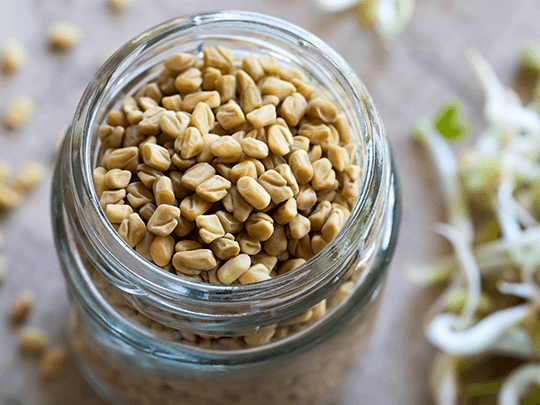
As early as the 11th century…
…Hildegard von Bingen recommended fenugreek to all those who reject food, as well as for fever and against skin diseases.
In addition, until a few decades ago fenugreek seeds were used in so-called livestock powders – a generally strengthening and appetite-stimulating combination of plants and salts. To this day, fenugreek seeds are used in folk medicine in a wide variety of areas:
Here are just some examples:
- in the treatment of dandruff
- to reduce loss of Appetite
- to treat inflammation of the upper respiratory tract
- fenugreek seeds can be found in breast-feeding teas to promote milk production
- or as a supportive treatment for diabetes.
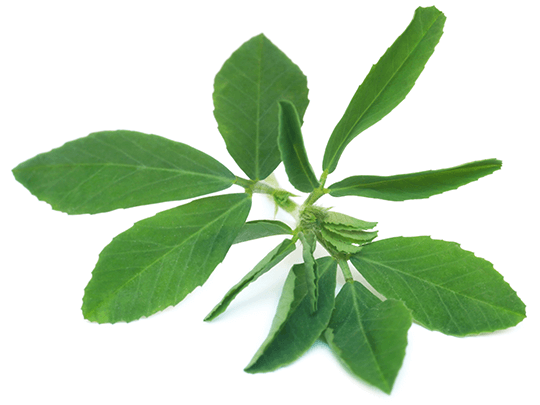
What to discover in this series?
- Fenugreek in Portrait
- Active ingredients in fenugreek
- The versatile modes of action of fenugreek (part 1&2)
In general, it can be said that fenugreek is an ancient cultivated plant which has many influences on the organism of humans and animals. Read here in part 1 of our series about the interesting history of fenugreek. In this third part of our series we would like to take a closer look at some of its effects here:
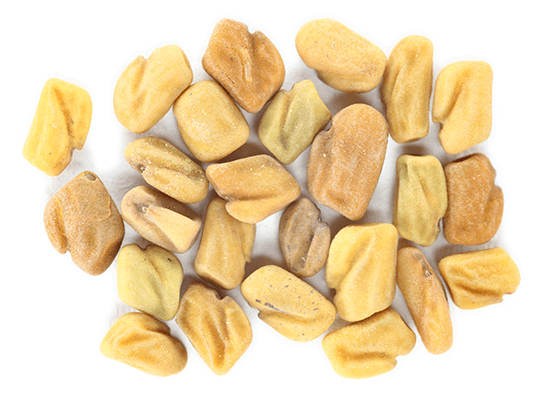
Influence on the blood glucose level
Fenugreek and its active ingredients are becoming increasingly important in human diabetes research due to their blood sugar lowering effect:
A study observed an increase in glucose-induced insulin release in human pancreatic cells and in pancreatic cells of rats. According to Basch et al. (2003), the reason for these effects is the amino acid 4-hydroxy-isoleucine, which has only been found in fenugreek so far. The authors also found an increase in insulin receptors and a decrease in plasma glucose concentration. However, the exact mechanism of action is still unclear (Basch et al., 2003).
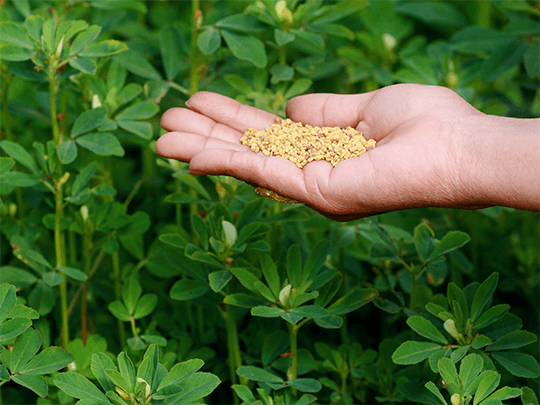
There are further explanations for the blood glucose lowering effect of the galactomannans of fenugreek: According to Basu and Srichamroen (2010), the galactomannans increase the viscosity of the digesta in the intestine. By that, the chyme remains in the intestine for a longer period of time. A longer residence time results in a delayed carbohydrate breakdown. Thus, the glucose accumulation in the blood after food intake is delayed (Basu and Srichamroen 2010).
Influence on the gastric mucosa and on the activity of digestive enzymes
Suja Pandian et al. (2002) showed that fenugreek seeds have a protective effect on the stomach lining:
They induced lesions to the stomach mucosa of rats using ethanol and fed the rats aqueous fenugreek extract or a fenugreek seed fraction. This feeding reduced the formation of gastric ulcers by over 50 %. The severity of the lesions was also lower in the group fed with fenugreek seed than in the control group.
The authors even went one step further:
compared to the administration of omeprazole, an effective drug for the inhibition of H2, the aqueous fenugreek extract was equally effective. The gel fraction of the seeds was even more effective with regard to gastric ulcers.
The seeds of fenugreek seem to have a protective role on the stomach lining due to their antisecretory activity. Suja Pandian et al. (2002) suspect that the composition of the polysaccharides and the flavonoids are responsible for the gastroprotective effect.
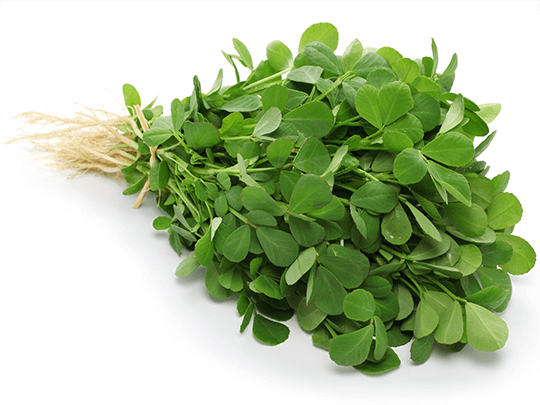
In vitro and in vivo studies in rats showed that fenugreek in some cases significantly increased the activity of digestive enzymes such as maltase, lactase and saccharase as well as intestinal lipase with a single administration of 40 mg.
Again, the administration of 2 g fenugreek/kg dry matter of the feed led to an increased activity of the digestive enzymes. The activities of pancreatic lipase and chymotrypsin were each increased by 42 %. In vitro, the use of fenugreek in concentrations of 0.1 mg/ml and 1.0 mg/ml respectively led to an increase in the activity of various digestive enzymes (Platel and Srinivasan 1996; Platel and Srinivasan 2000; Ramakrishna Rao et al. 2003)
Do you want the entire article as PDF including all references?
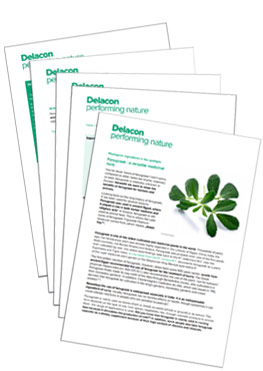
You are only one click away.

Anne Oberdorf
Anne has always been fascinated by the unknown, the diversity and beauty of nature. Her love for nature brought her to Delacon in 2018 after studying agricultural sciences, where she worked as Technical Communications Manager and later as Product Manager Aquaculture. Since February 2021, she has been taking a new, natural career path outside of Delacon.










